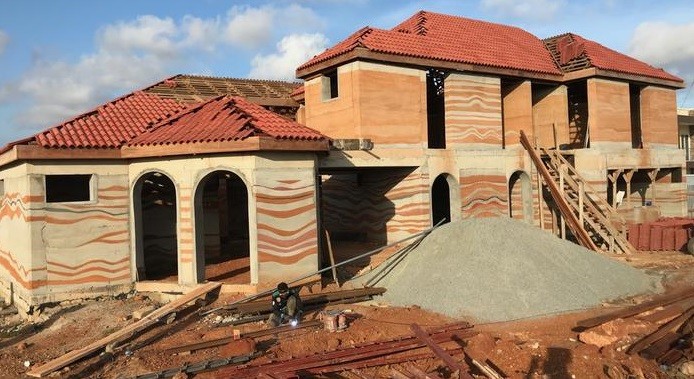Modern Mud Homes: A New Take on Building In Africa
It’s a problem of expectations; when concrete and steel symbolize modernity, how does a humble mud home become architecture that’s desirable? It’s an important issue since new concrete construction, which relies on imported resources, often strains the budgets of middle-class families and results in dwellings unfit for the tropical environment. The call for single family and semi-urban home designs utilizing mud construction resulted in dozens of concepts from practitioners around the globe.
Joelle Eyeson, explains the housing challenges in Farce. Could using the traditional ‘rammed earth’ technique point the way to affordable Eco-housing in the future?
Joelle Eyeson: Brought their expertise in local materials and the local environment. The whole idea is that we build affordable and Eco-friendly housing. We use locally sourced materials such as clay, laterite and granite chippings which are abundantly available Africa.
What exactly is the “rammed earth” technique that you use?
The rammed earth technique is just a mixture of laterite, clay and then granite chippings. We use 5 percent cement to bind it but also do it using lime. We wanted a way of building without using cement, because it is very toxic; especially in our climate it combines with the heat and humidity and creates a really bad indoor air quality. The rammed earth technique uses local materials and tries to avoid cement, which can be toxic
When we discovered the rammed earth technique we thought it was great because it is basically like the traditional mud house, but updated. It’s a tried and tested technique that’s been around for centuries. Parts of the Great Wall of China were even built with rammed earth.
In what other ways are the buildings Eco-friendly?
In Africa it is so hot you usually need air conditioning systems in your home, but these are not always affordable, Eco-friendly, or good for your health. We teamed up with some German engineers who gave us the idea of underground cooling systems. We dig around 8 feet or more until we get to the cool air underground. Then we use a solar pump which is constantly bringing the cool air into the home. Then it is only the cost of the solar pump (around $300) which people need to pay and there are no bills. The company is also experimenting with ways of creating environmentally friendly indoor cooling system
Where do you see Eco-housing going in the future?
Right now we are only doing individual houses. In the future we would like to be involved in bringing our Eco-housing into bigger housing projects and estates.With our foundation we are also planning on doing more workshops with local communities, helping to teach them the skills of building with rammed earth. We are also planning on building eco toilets. Africa has a really bad sanitation problem — only around 19 percent of people have access to a toilet and in rural areas it’s much worse. We want to enable people to come and learn about rammed earth, build something that is beautiful, Eco-friendly and useful for their own communities.





